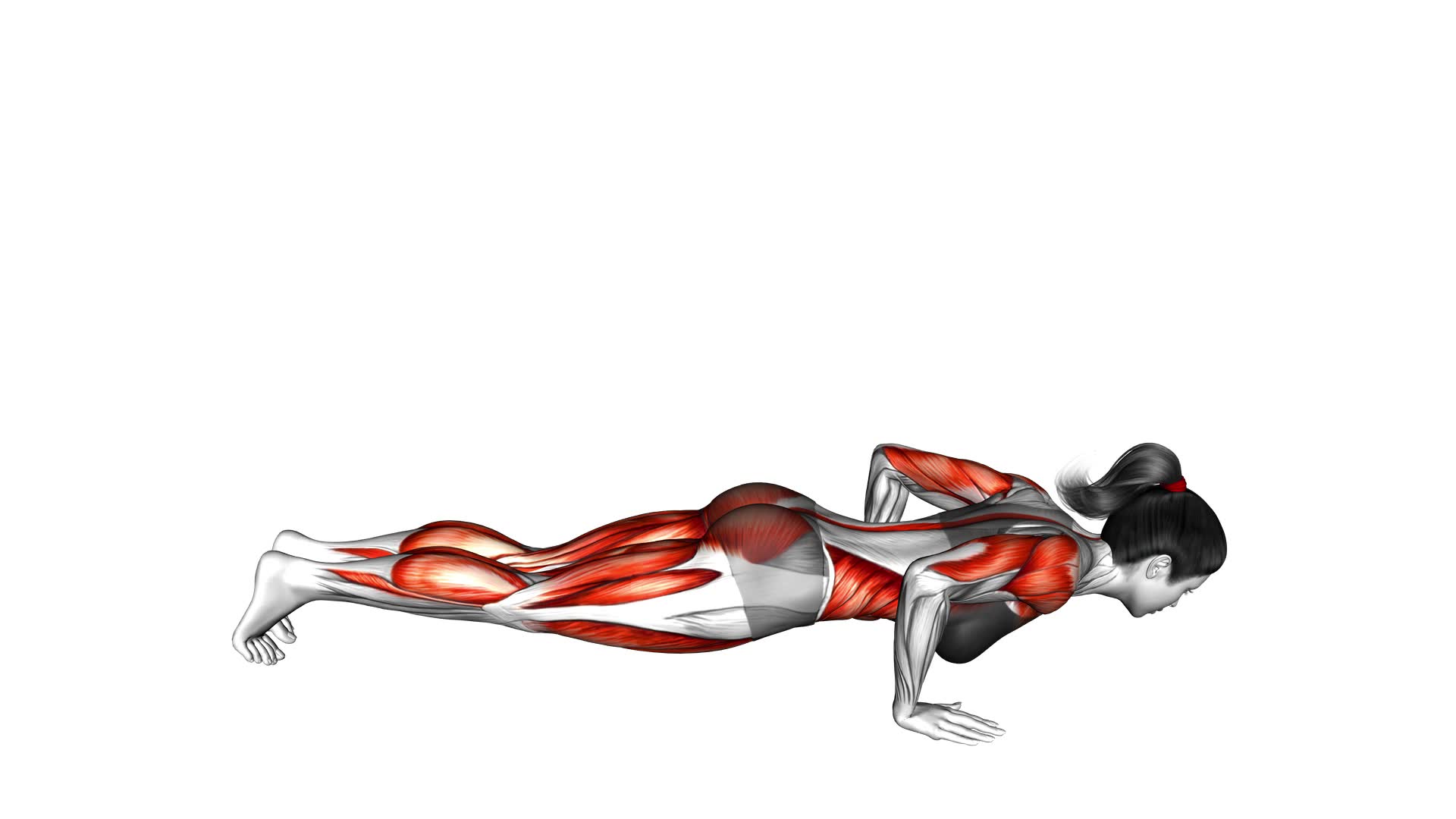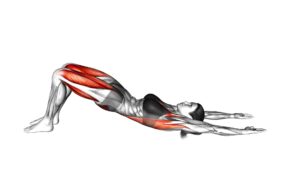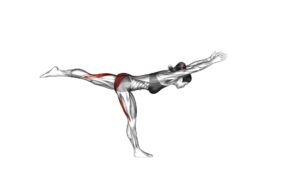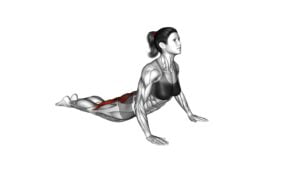Chaturanga Pose (female) – Video Exercise Guide & Tips

Are you looking to enhance your yoga practice? Look no further than the Chaturanga Pose!
Watch This Exercise Video
In this video exercise guide, you'll discover the benefits of this pose and learn proper alignment and form.
Whether you're a beginner or an experienced yogi, we have modifications and advanced variations to suit your level.
Plus, we'll help you avoid common mistakes.
Get ready to strengthen your body, mind, and spirit with Chaturanga Pose!
Key Takeaways
- Chaturanga Pose strengthens muscles in the arms, shoulders, and core.
- Proper alignment and form are crucial, including breath control, engaging the core muscles, and maintaining a neutral spine.
- Beginners can modify the pose by starting with knees on the ground, using props for support, or performing against a wall.
- Experienced yogis can try advanced variations like one-legged Chaturanga or floating Chaturanga to challenge strength, balance, and stability.
Benefits of Chaturanga Pose
What are the benefits of practicing Chaturanga Pose?
Chaturanga Pose, also known as Four-Limbed Staff Pose, offers a multitude of health benefits. Firstly, it strengthens the muscles in your arms, shoulders, and core, helping to improve your overall upper body strength. This pose also engages your leg muscles, providing a full-body workout. Additionally, Chaturanga Pose helps to improve your posture and stability, as it requires you to maintain a straight line from your head to your heels.
Furthermore, Chaturanga Pose can be modified to suit your fitness level and needs. If you're a beginner, you can start by practicing the pose with your knees on the ground, gradually working your way up to the full expression of the pose. Alternatively, you can use props, such as blocks or a bolster, to provide support and assist with proper alignment.
By practicing Chaturanga Pose regularly and incorporating variations and modifications, you can experience the many health benefits it offers.
Now, let's explore the importance of proper alignment and form in this pose.
Proper Alignment and Form
To ensure proper alignment and form in Chaturanga Pose, focus on maintaining a straight line from your head to your heels as you lower down towards the ground. This will help you maximize the benefits of the pose and avoid unnecessary strain or injury.
Here are some key points to keep in mind:
- Importance of breath control: As you lower down, exhale deeply and engage your core muscles. This will help you maintain stability and control throughout the pose.
- Engaging the core muscles: To maintain a straight line, it's crucial to engage your core muscles. Imagine pulling your belly button towards your spine and keep your abdominal muscles activated.
- Keep your shoulders away from your ears: As you lower down, be mindful of your shoulder position. Draw your shoulder blades down and back, away from your ears, to avoid tension in the neck and shoulders.
- Maintain a neutral spine: Avoid overarching or rounding your back. Keep your spine in a neutral position, with a slight natural curve.
By focusing on these alignment cues and practicing proper form, you can safely and effectively perform Chaturanga Pose.
Now, let's explore modifications for beginners to help build strength and progress in this challenging pose.
Modifications for Beginners
To modify Chaturanga Pose for beginners, focus on building strength and stability in key areas. Beginner friendly modifications and variations for different body types can help make this challenging pose more accessible.
For beginners, it's important to start with modified versions of Chaturanga Pose until you have developed enough strength and stability. One option is to perform the pose with your knees on the ground. This reduces the amount of weight you need to support and allows you to focus on engaging your core and upper body muscles.
Another modification is to use yoga blocks or a bolster under your chest. Placing your hands on these props can help alleviate some of the strain on your shoulders and wrists, making the pose more comfortable for beginners.
If you have a larger body frame or limited upper body strength, you can also try performing Chaturanga Pose against a wall. This provides extra support and stability, allowing you to focus on proper alignment and engagement of the muscles.
Advanced Variations for Experienced Yogis
As an experienced yogi, you can explore advanced variations of Chaturanga Pose to further challenge your strength and balance. These advanced modifications will take your practice to the next level and help you strengthen your transitions between poses.
Here are three advanced variations to try:
- One-Legged Chaturanga: Start in a traditional Chaturanga Pose, but lift one leg off the ground, parallel to the floor. Engage your core and maintain a strong plank position as you lower down into the pose. This variation not only challenges your upper body strength but also requires balance and stability.
- Side Plank Chaturanga: Begin in a side plank position, with one hand on the mat and the other reaching towards the ceiling. Lower your body down into a Chaturanga Pose while keeping your hips lifted and core engaged. This variation helps to strengthen your obliques and shoulders while improving your overall stability.
- Floating Chaturanga: From a plank position, shift your weight forward and engage your core. As you lower down into the pose, lift both feet off the ground and hold the hover for a few breaths. This variation requires a strong core and upper body strength, as well as precise control of your movements.
Common Mistakes and How to Avoid Them
To avoid common mistakes in Chaturanga Pose, focus on maintaining proper alignment and engaging the necessary muscles throughout the pose. One common mistake is allowing your shoulders to collapse forward, which can strain the rotator cuff and lead to injury. To avoid this, keep your shoulders pulled back and down, creating a strong foundation for your upper body.
Another mistake is sinking your hips too low or allowing your lower back to sag. This puts excessive pressure on your wrists and can lead to wrist pain. Instead, engage your core and lift your hips so that your body forms a straight line from your head to your heels.
Additionally, many people tend to rush through Chaturanga, sacrificing proper form for speed. Take your time and focus on the details of the pose, such as keeping your elbows close to your body and maintaining a strong plank position.
Frequently Asked Questions
How Long Should I Hold the Chaturanga Pose?
To hold the chaturanga pose, focus on proper form and alignment. Keep your body parallel to the floor, with your shoulders directly over your wrists and your core engaged.
Beginners can modify by lowering their knees to the ground or practicing against a wall for support. Holding the pose for 10-20 seconds is a good starting point, gradually increasing the duration as you build strength and endurance.
Remember to listen to your body and rest when needed.
Is Chaturanga Pose Suitable for Pregnant Women?
During pregnancy, it's important to modify your Chaturanga pose to ensure the safety of both you and your baby.
There are several modifications you can try, such as lowering your knees to the ground or using props for support.
Practicing Chaturanga during pregnancy can have many benefits, including strengthening your arms, shoulders, and core muscles.
However, always consult with your healthcare provider before attempting any exercise during pregnancy to ensure it's suitable for you.
Can Chaturanga Pose Help in Weight Loss?
Chaturanga pose is a great exercise for weight loss. It can help you burn calories and build lean muscle. Beginners can start with modified variations, like using knees for support. As you progress, you can challenge yourself with more advanced variations.
This pose specifically targets and tones the arms and core muscles. By consistently practicing chaturanga pose, you can achieve your weight loss goals while strengthening and toning your body.
Are There Any Precautions or Contraindications for Practicing Chaturanga Pose?
When practicing Chaturanga Pose, it's important to be aware of the precautions and contraindications. Precautions include avoiding this pose if you have wrist, shoulder, or lower back injuries. Contraindications include pregnancy or recent abdominal surgery.
It's crucial to listen to your body and modify the pose if needed. Remember to engage your core and keep your body aligned to reduce the risk of injury.
Always consult with a qualified yoga instructor if you have any concerns.
How Often Should I Practice Chaturanga Pose to See Improvements in My Strength and Flexibility?
To see improvements in your strength and flexibility, it's important to practice Chaturanga Pose regularly. Aim to incorporate it into your workout routine at least three times a week.
Start by modifying the pose for beginners to avoid strain or injury. As you progress, you'll notice the benefits of Chaturanga Pose for upper body strength.
Keep practicing and listen to your body to gradually increase the frequency and intensity of your sessions.
Conclusion
In conclusion, incorporating the chaturanga pose into your yoga practice can provide numerous benefits, such as strengthening the arms, core, and back muscles.
By maintaining proper alignment and form, you can avoid common mistakes and maximize the effectiveness of this pose.
Beginners can make modifications to suit their fitness level, while experienced yogis can explore advanced variations to further challenge themselves.
Remember, practice makes perfect, so keep practicing and enjoy the benefits of this powerful pose.

Author
Years ago, the spark of my life’s passion ignited in my mind the moment I stepped into the local gym for the first time. The inaugural bead of perspiration, the initial endeavor, the very first surge of endorphins, and a sense of pride that washed over me post-workout marked the beginning of my deep-seated interest in strength sports, fitness, and sports nutrition. This very curiosity blossomed rapidly into a profound fascination, propelling me to earn a Master’s degree in Physical Education from the Academy of Physical Education in Krakow, followed by a Sports Manager diploma from the Jagiellonian University. My journey of growth led me to gain more specialized qualifications, such as being a certified personal trainer with a focus on sports dietetics, a lifeguard, and an instructor for wellness and corrective gymnastics. Theoretical knowledge paired seamlessly with practical experience, reinforcing my belief that the transformation of individuals under my guidance was also a reflection of my personal growth. This belief holds true even today. Each day, I strive to push the boundaries and explore new realms. These realms gently elevate me to greater heights. The unique combination of passion for my field and the continuous quest for growth fuels my drive to break new ground.







